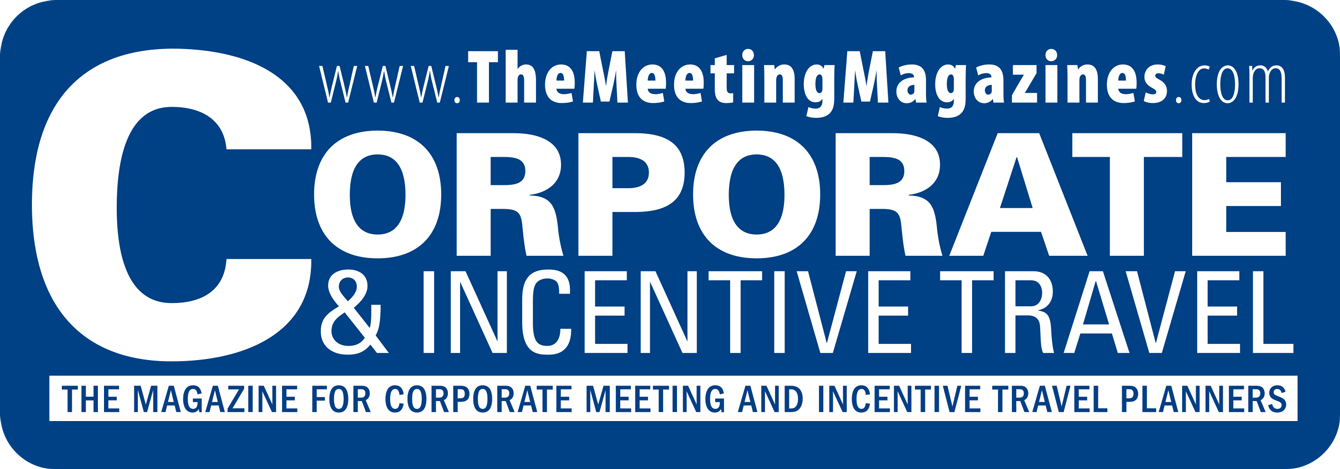Keynotes Who ShineMarch 20, 2025
Why Choosing the Right One Is Key to an Event’s Success By Andrea E. McHughKeynotes Who Shine
Why Choosing the Right One Is Key to an Event’s Success
Adobe Stock
Whether you’re organizing an exclusive corporate retreat, a medium-size association meeting or a large industry conference, a compelling keynote speaker sets the tone for any event. By energizing attendees, offering valuable insights and inspiring meaningful discussions, your speaker lays the foundation for the day or days ahead, and their ability to captivate an audience ensures your event starts off on the right foot. It’s an important decision, and finding the right speaker to effectively communicate your message — within budget — can be a tall order, but with some careful thought and strategic moves, you can hone in on the best matches for the task ahead.
Define Your Meeting Objectives
Before diving into a keynote speaker search, meeting planners must first define the event’s mission and the audience they want to reach. No one knows this better than Wayne Robinson, CMP, CMM, who, for more than four decades, orchestrated global insurance industry events that showcased strategic leadership and innovative execution, most recently at FM Global.
“The first thing you do is find objectives for your meeting. You’ll meet with the stakeholders who will provide you with a very rough sketch of your agenda and what they want to walk away with — and a lot of times they’re not prepared to talk about it yet, because it’s early in the process,” says Robinson. Planners, he explains, can steer that conversation by first identifying the type of meeting it will be. The speakers needed for an internal business meeting will vary greatly from those required at a client meeting, a strategy meeting or a feel-good company teambuilding gathering. “It drives what type of speaker or what type of agenda you want to put together,” Robinson says.
Once the meeting type is identified, its purpose and objectives are clarified and a rough framework of the agenda is created, planners can then begin sourcing speakers who will complement the program and align with its goals.
Part and parcel of laying out a meeting’s objectives is having a clear understanding of its audience. If they are, for example, a gathering of highly successful sales people, a speaker needs to be “top tier” — someone who will deliver a next-level message that is going to inspire and motivate, rather than simply dole out mundane tips and tricks of the trade. “If you want to ‘wow’ them, that’s when you’re going to get into maybe a big outside speaker, or somebody that’s very well known, or they have a book out that’s very popular where they’re talking about a topic that’s apropos to that audience,” says Robinson.
Simultaneously, determining a budget is critical as this will help determine which available keynote speakers are attainable — and it’s not just the speaking fee. Transportation, lodging, meals and any incidental costs may be on the table as well, so understanding your total spend will help narrow down the list of potential candidates from the outset.
Setting the Stage for Success
Gail Alofsin is a highly sought after keynote speaker who, over the course of more than two decades, has been hired by top companies, including Amica Insurance, Southwest Airlines, Hasbro and others. She agrees with Robinson that knowing your audience and understanding the meeting objectives make up the cornerstone of delivering an effective, results-driven address. In fact, Alofsin asks clients to complete a survey that enables her to tailor her talk so that she is not only addressing an industry, but embracing the group’s own corporate culture as well.
“The personalization totally increases the relevance of the program,” Alofsin explains. She adds that in addition to such preparations, face-to-face interaction is equally important. “I think that the best keynotes that resonate with people in the room — whether it’s corporate executives, young professionals or industry leaders — are when you meet them ahead of time. I really try to fly in the day before to get to know the people,” she says. “I’ll go to the cocktail reception the evening before. I’ll go down to breakfast. I’ve even met people in the gym!” By interacting with attendees, Alofsin says, she learns about them, their challenges and aspirations and, sometimes, she gets to know their corporate jargon.
Scouting Star Speakers
Sarah Alice Keiser is an event management consultant who plans meetings for the Association of Leadership Programs (ALP) among other clients. “We really rely on our network of peers and colleagues across the country to suggest the rock stars that they work with, especially up-and-comers who people are using to give people a shot to grow and share their message at the ALP conference,” Keiser says.
While word of mouth is still the most popular way to find keynote speakers, Alofsin points out there are myriad effective methodologies, but she says she is typically hired by attendees who have seen her speak elsewhere. “I never push for the podium. It’s very organic,” she says.
There’s no better way to size up a speaker than by seeing them strut their stuff live. Meeting planners should be evaluating not just whether a speaker is good, but whether they’re a good match for the initial goals laid out in advance. Sometimes you might find a dynamic speaker but they’re just not the best option for your immediate needs — and that’s okay. Make a note for future bookings.
Good, old-fashioned grassroots research can yield solid results as well. For example, through LinkedIn you can source names, identify mutual connections and dig up video clips, while YouTube enables planners to review demo reels and full-length presentations to assess a speaker’s stage presence, delivery style and ability to engage an audience. On Instagram, which also offers short demos, a search using the hashtag #keynotespeaker yields more than 800,000 results. Sure, there will be a lot of clutter to comb through, but for a do-it-yourself search, there’s talent to be found.
Part of Chris Maxwell’s role as president and CEO of the Rhode Island Trucking Association is both planning meetings for his association and organizing larger gatherings for the regional association. Maxwell often looks within the association’s membership for speakers who can deliver a meaningful message. The tactic also keeps the costs down. “We usually keep it without much of a fee by keeping it in house, and it’s therefore somebody appropriate to our mission and what we do,” Maxwell says.
Another valuable and potentially cost-saving resource for speakers (and countless other event needs) is the local convention and visitors bureau (CVB) for the location in which your meeting is being held. Partnering with a CVB and Destination Marketing Organization (DMO) — and sometimes the local chamber of commerce — can prove invaluable as many offer a roster of highly qualified speakers who are either experts in various topics or skilled in motivating a diverse group, no matter what the industry. By limiting their search locally, organizations can minimize or eliminate transportation and lodging expenses while still securing top-tier talent. Additionally, local speakers have insights into the region that can be woven into their presentations, providing a more personalized experience for attendees.
For Robinson, who has been tasked with planning global events of all shapes and sizes, speaker bureaus have been immensely helpful in securing keynote speakers including Earvin “Magic” Johnson, bestselling author, podcaster and motivational speaker Mel Robbins and globally renowned artist, TED speaker and bestselling author Erik Wahl. Washington Speakers Bureau, Goodman Speakers and SpeakInc are just some of the organizations he has relied for vetted, top-tier talent.
“I met all these people through my association with FICP, the association of Financial & Insurance Conference Professionals, because they would come and do speaker showcases,” Robinson says. Bureaus also handle logistics, including contract negotiations, scheduling and payment arrangements, ensuring a smooth experience. This level of support is particularly useful for large conferences, where multiple speakers might be needed, allowing planners to focus on other critical aspects of event management.
Turning inward to professional associations — both industry-specific as Robinson has, or organizations including Meeting Planners International (MPI), the Professional Convention Management Association (PCMA), the American Planning Association (APA) and others — can also yield ample referrals and personal endorsements.
Turning Your Shortlist Into the Perfect Pick
You’ve narrowed the list down to the cream of the crop. It’s a selection of speakers within your budget — and you’re confident that each one can bring down the house. Now what? Assessing each speaker’s fit for the meeting doesn’t have to be a complex process. Revisit those objectives you set early on in planning.
For Robinson, a large-scale conference requires a committee working from the outset to discuss and decide: the most important messaging they want to convey, who the audience will be and how a speaker’s presentation is going to both resonate and reflect that audience. He concedes that this might mean asking hard questions. Sometimes, he says, the speaker may have more impact by leading a panel discussion or a using a format that is more interactive than a straightforward keynote address.
Keiser also relies on committees once outstanding speaker candidates have been determined. “For ALP and for a different workshop I work with, the Erma Bombeck Writers’ Workshop, we really rely on committee feedback,” Keiser says. “We take interest from that larger pool of people and siphon that down and then circulate a short list amongst our committee that really is the audience, or who knows the audience, to make sure that the message is applicable.”
Budget may ultimately take some speakers out of consideration. Avoid disappointment by ensuring that your shortlist includes only speakers within your ballpark all-in budget. However, while a speaker typically has a standard fee, there might be room for negotiation depending on the meeting’s size or purpose. Many speakers offer flexible rates for nonprofits or charitable organizations, making it possible to secure high-quality talent within budget. Keiser says that negotiating rates is critical, especially for her non-profit clients.
To help make an informed decision, planners can review a speaker’s past engagements and assess their ability to customize presentations for different audiences. It’s also beneficial to engage in direct conversations with speakers to discuss expectations, presentation style, time allotted, AV needs and any specific requests to help them tailor their keynote.
“Make sure you evaluate the speaker’s ability to engage before booking,” advises Alofsin, who also belongs to the National Speakers Association, serving as a board member for their New England chapter. “Schedule a call so you can gauge their enthusiasm, their flexibility and feel assured that they’re understanding your goals as a meeting planner.” It’s important, she adds, that the speaker fully understands both the client’s goals and the audience to create a message that will hit home, engage and inspire. “Customization is crucial. One-size-fits-all presentations — they completely fall flat.”
To get a head start on the next speaker search, meeting planners should consider polling attendees well in advance to gather input on preferred speakers and topics. By conducting surveys a year ahead of the event, planners can identify themes that resonate with the audience and target speakers with expertise in those areas. This can be done in-person at an event, online, via newsletter or even using polls on social media if your organization has a robust following. Audience input not only refines the selection process but also increases the likelihood of a successful, well-received keynote session. C&IT








